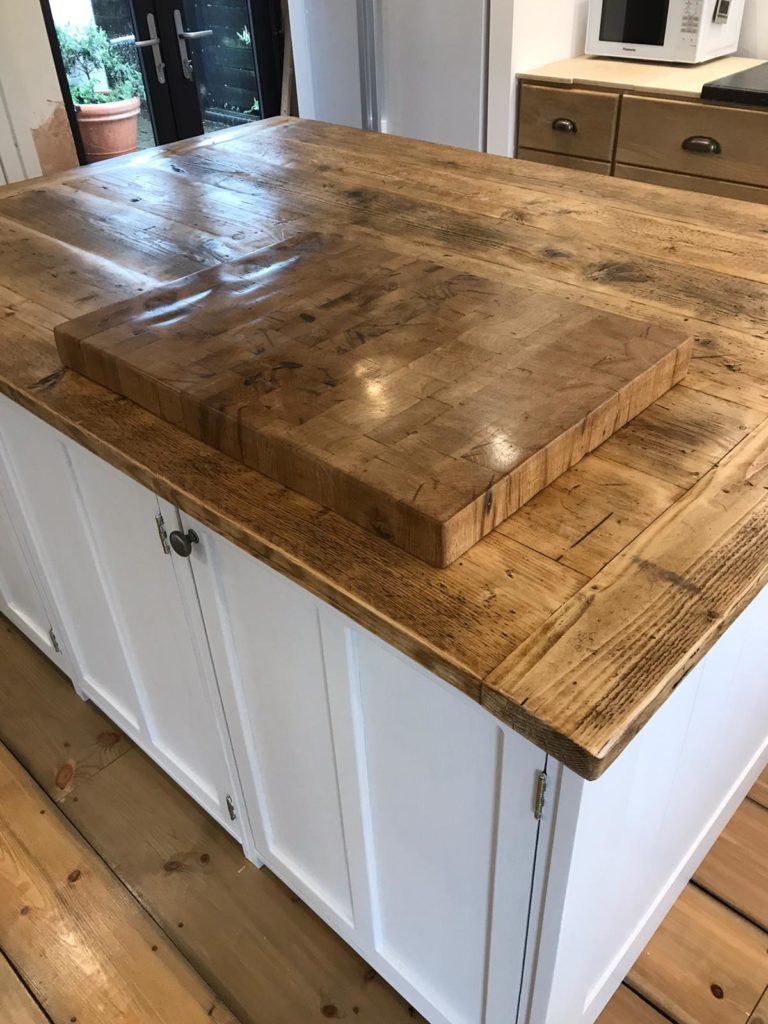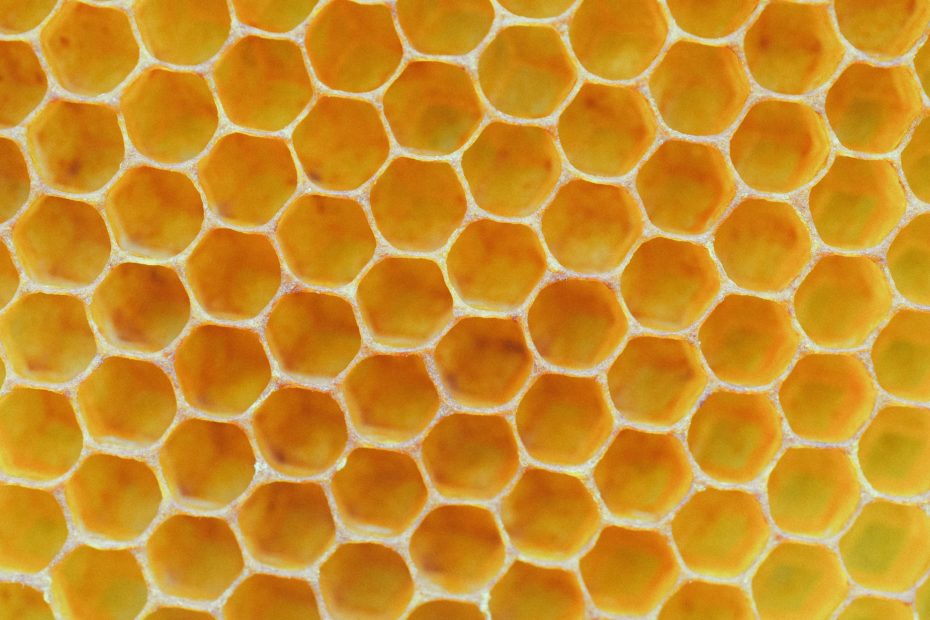To wax or oil wood, you are sealing and protecting it from wear and degradation by the elements. When you invest in expertly hand-crafted solid wood pieces such as this reclaimed pine scaffold board worktop and antique oak chopping block, it is vital that you choose the right finish to retain its character and prolong its life.

As an organic material, wood is rich in colour and texture and reclaimed wood displays evidence of its past life in distinct markings and colourings that it has acquired over the years. Some of these markings run deep, but a lot of the character resides in the top layer, which has been in contact with the elements, or involved with physical manipulation in industrial work environments.
We kiln-dry our reclaimed wood to a specified moisture percentage that ensures pieces tolerate the heat of a kitchen or underfloor heating, but the wood must be sealed to prevent future moisture from being absorbed.
To wax or oil wood: which is better?
Wax finish
A wax finish brings out the beautiful variety of tones in the wood. Waxed worktops can be easily washed clean, but wax does not have quite as much resilience against water compared to an oiled finish. Frequent reapplication of wax is essential to prevent water damage coming through to the porous wood below. The older layers of wax do not have to be removed in the reapplication process, simply add more wax over the top.
Oil finish
Oil may be more water resistant than wax, but requires a lengthier application process and to reapply, the old layer has to be sanded back, which removes all the character from the top surface of the wood.
Regular hardware-store furniture oil tends to block-paint the wood, which may be fine for newer pieces of wood and contemporary furniture, but ruins the beauty of a natural reclaimed and hand-worked piece.
For customers wanting an oiled finish, we use Danish oil applied by our experts. First, we wax the piece and leave for a number of weeks to fully cure. Then, we apply a wax remover carefully, to leave a thin residue through which the Danish oil penetrates and is sealed on top.
Your choice
Your choice to wax or oil wood should be determined by the type of use intended for your piece and how much water exposure it is likely to experience. You should also factor in the time and costs involved with application and reapplication and whether the wood has particular markings or features that you wish to retain.
Have a chat with our experts to learn more about how we wax or oil wood and discuss your project to determine which finish is best.
See more examples of our woods, techniques and projects on our Instagram account
